- /images/Pieces-Objets/Livres/Thangka-Tara-blanche/Thangka-sita-tara1.jpg

- /images/Pieces-Objets/Livres/Thangka-Tara-blanche/Thangka-sita-tara2.jpg

- /images/Pieces-Objets/Livres/Thangka-Tara-blanche/Thangka-sita-tara3.jpg

- /images/Pieces-Objets/Livres/Thangka-Tara-blanche/Thangka-sita-tara4.jpg

- /images/Pieces-Objets/Livres/Thangka-Tara-blanche/Thangka-sita-tara5.jpg

/images/Pieces-Objets/Livres/Thangka-Tara-blanche/Thangka-sita-tara1.jpg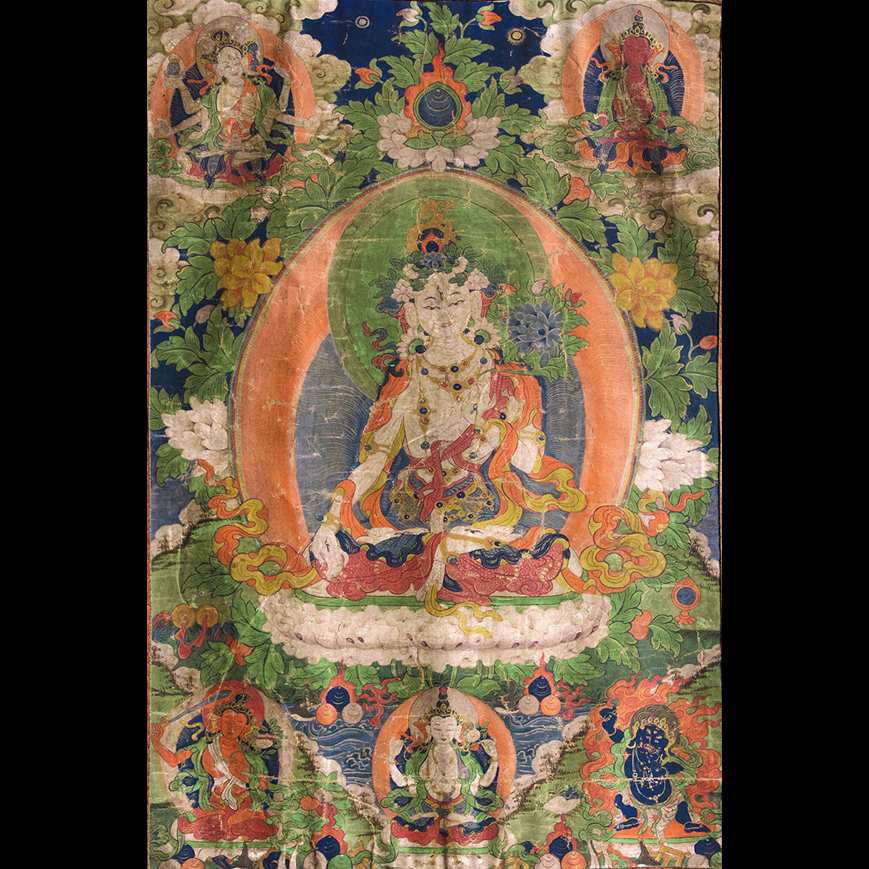

/images/Pieces-Objets/Livres/Thangka-Tara-blanche/Thangka-sita-tara2.jpg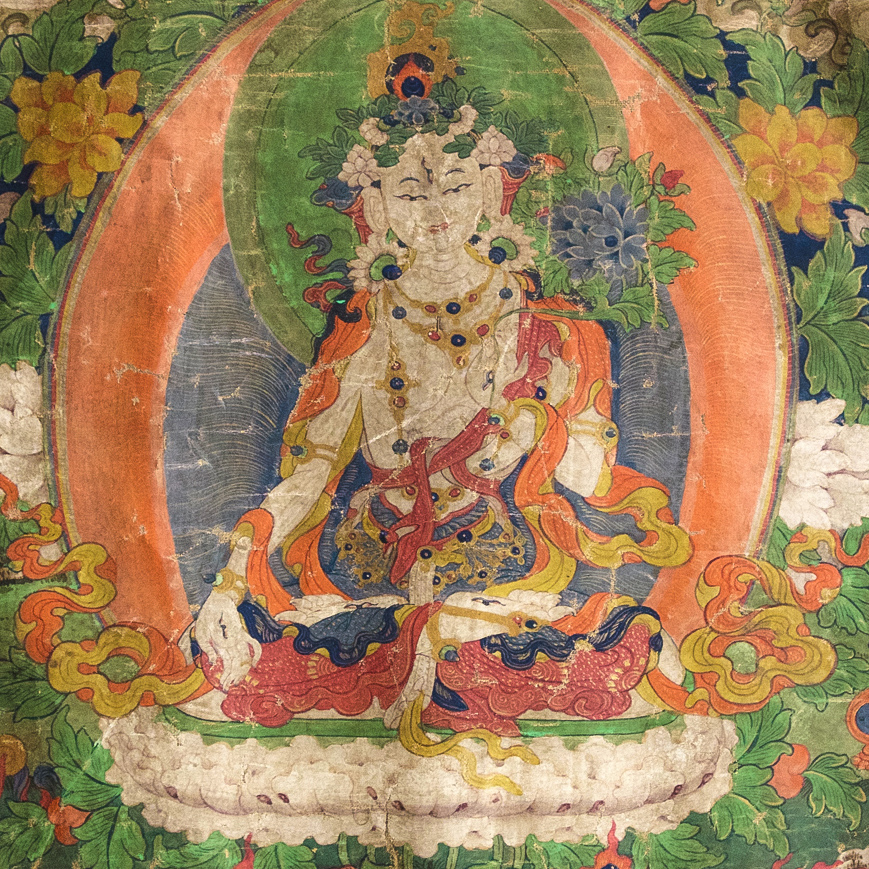

/images/Pieces-Objets/Livres/Thangka-Tara-blanche/Thangka-sita-tara3.jpg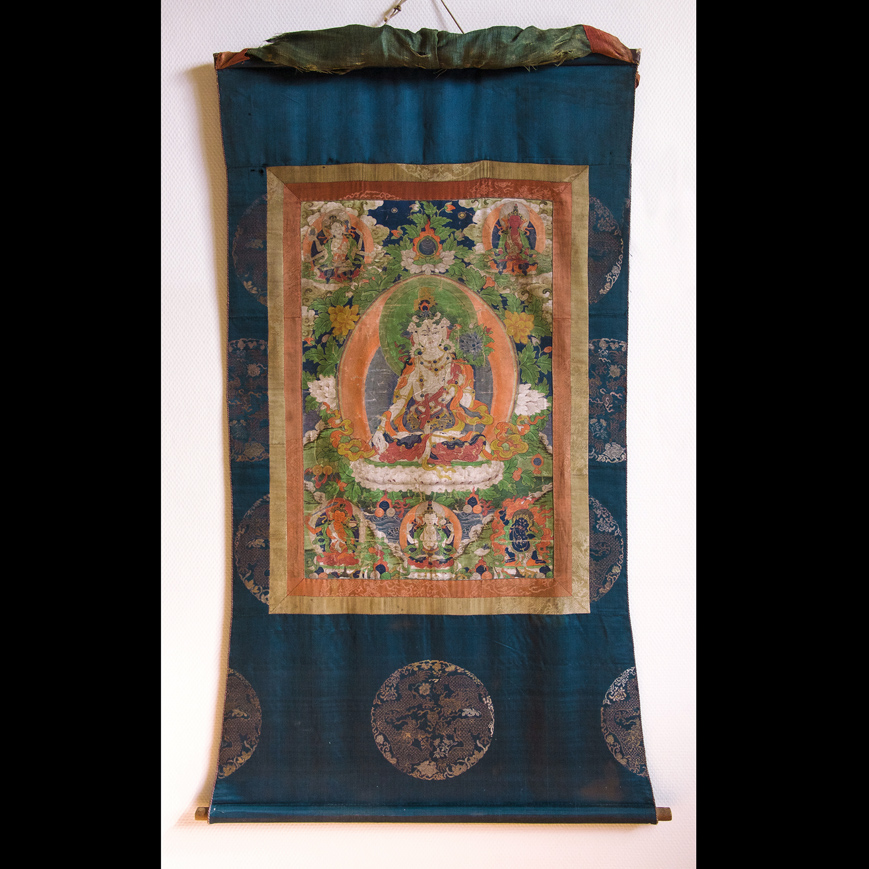

/images/Pieces-Objets/Livres/Thangka-Tara-blanche/Thangka-sita-tara4.jpg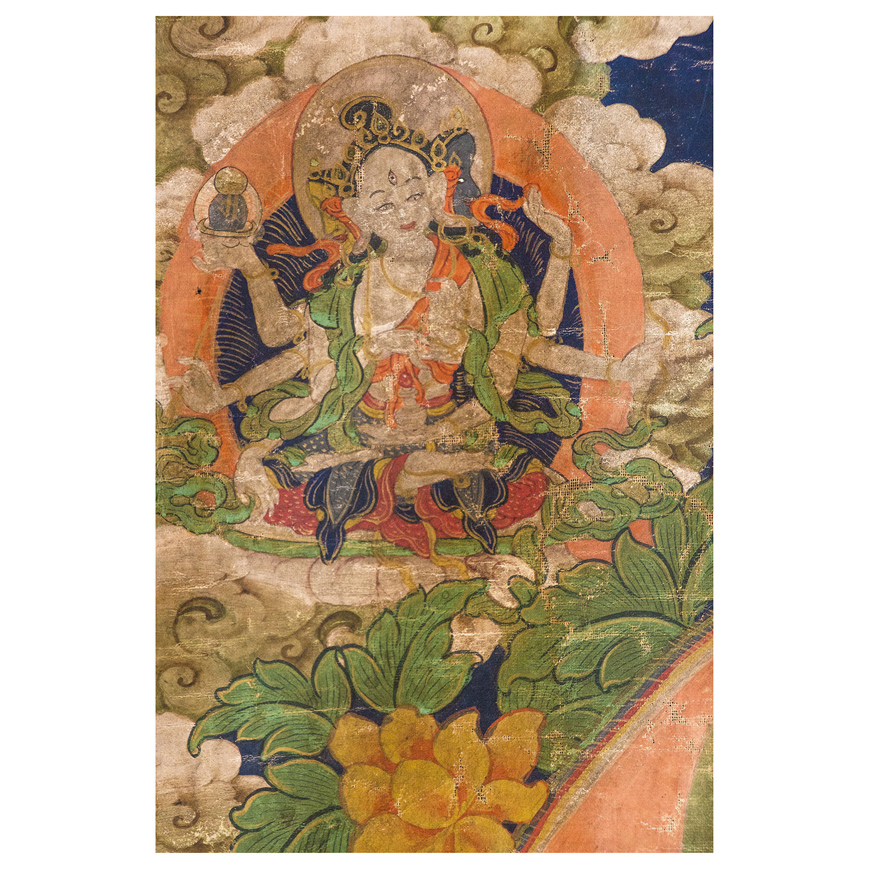

/images/Pieces-Objets/Livres/Thangka-Tara-blanche/Thangka-sita-tara5.jpg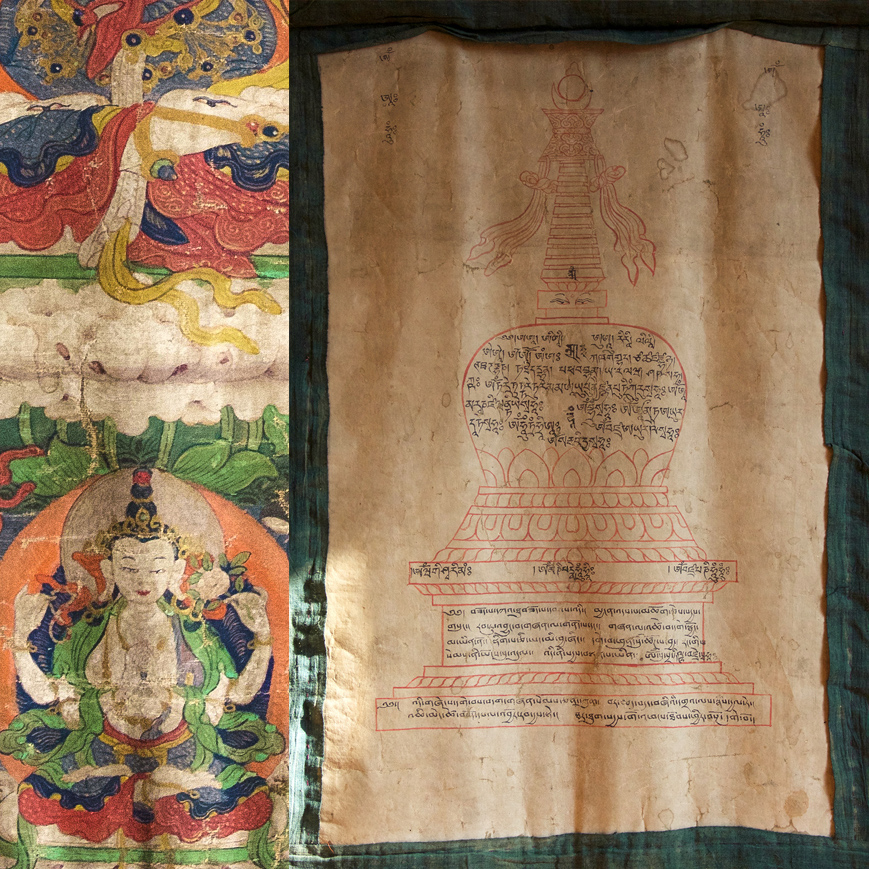

260134 ~
thangka de tara blanche
tibet, xviii-xixe siècle
Détrempé sur toile, représentant la divinité dite Sita Tara, assise en vajrasana sur un lotus, la main droite en varadamudra geste de la générosité suprême, la gauche tenant une tige de lotus utapala entre le pouce et l’index dont la fleur bleue s’épanouit près de son oreille, les trois yeux mi-clos, la bouche esquissant un sourire, elle porte des bijoux précieux et des vêtements de soie colorés. La paume des mains et des pieds ayant chacun un œil, les sept yeux de la parfaite conscience. Le cintamani au dessus de sa coiffe.
Elle entourée d’une suite de divinité ; en bas au centre Avalokitesvara, en bas à droite Mahakala, an bas à gauche Manjusri, en haut à gauche Ushnishavijaya et en haut à droite Amitayus. De façon générale Sita Tara représente la longévité, la compassion, et aussi l’élimination de la souffrance. Inscription dédicatoires et noms des divinités au dos dans une forme de stupa, mantras de souhaits et sanctification en tibétain et sanskrit.
Elle entourée d’une suite de divinité ; en bas au centre Avalokitesvara, en bas à droite Mahakala, an bas à gauche Manjusri, en haut à gauche Ushnishavijaya et en haut à droite Amitayus. De façon générale Sita Tara représente la longévité, la compassion, et aussi l’élimination de la souffrance. Inscription dédicatoires et noms des divinités au dos dans une forme de stupa, mantras de souhaits et sanctification en tibétain et sanskrit.
Dimension : 61 x 41 cm / Avec montage en soie : 123 x 75 cm
~
a thangka of white tara
tibet, 18-19th century
Distrempted on cloth represented the deity called Sita Tara, seated in vajrasana on a lotus, the right hand in varadamudra gesture of supreme generosity, the left holding a lotus stem with the thumb and forefinger which the blue flower is blossoming near his ear, the three eyes half-closed, wearing precious jewels and silk coloured garments. The palms of the hands and feet each have an eye, the seven eyes of pristine awareness. The cintamani above her. She is surrounded by a retinue of deities : at the bottom center Avalokitesvara, at the bottom right Mahakala, at the bottom left Manjusri, at the top left Ushnishavijaya, and at the bottom right Amitayus. She gives longevity and eliminates the suffering.
The reverse with a stupa-shaped tibetan inscription consisting of sanctification and blessings mantras in Sanscrit and Tibetan script.
The reverse with a stupa-shaped tibetan inscription consisting of sanctification and blessings mantras in Sanscrit and Tibetan script.